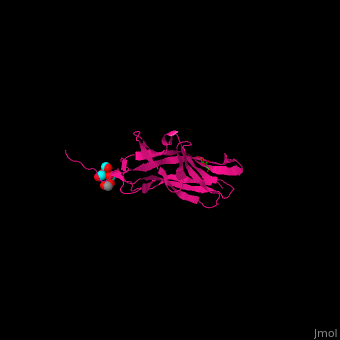Function
Adhesins (Adh) are surface components of bacteria which facillitate adhesion to surfaces or other cells. Adh are specific surface recognition protein and are regarded as virulence factors.[1] FimH is the E. coli adhesin which is part of the type 1 pili of the bacteria. The pili is composed of subunits FimF, FimG and FimD[2]. The main Adhesins of the pathogen Mycoplasma genitalium are P110 or Mgp-operon protein 3 and P140[3]. See also Novel structure of the N-terminal helical domain of BibA, a Group B Streptococcus immunogenic bacterial adhesin.
For trimeric autotransporter adhesin see EibD.
Disease
Bacterial pathogens use adhesins as a major factor in adhesion-based virulence. Adhesins serve as vaccine targets since they are essential to infection[4].
Structural highlights
(PDB ID 4f8p)[5]
- . Water molecules are shown as red spheres.
- .
3D Structures of adhesin
Adhesin 3D structures

